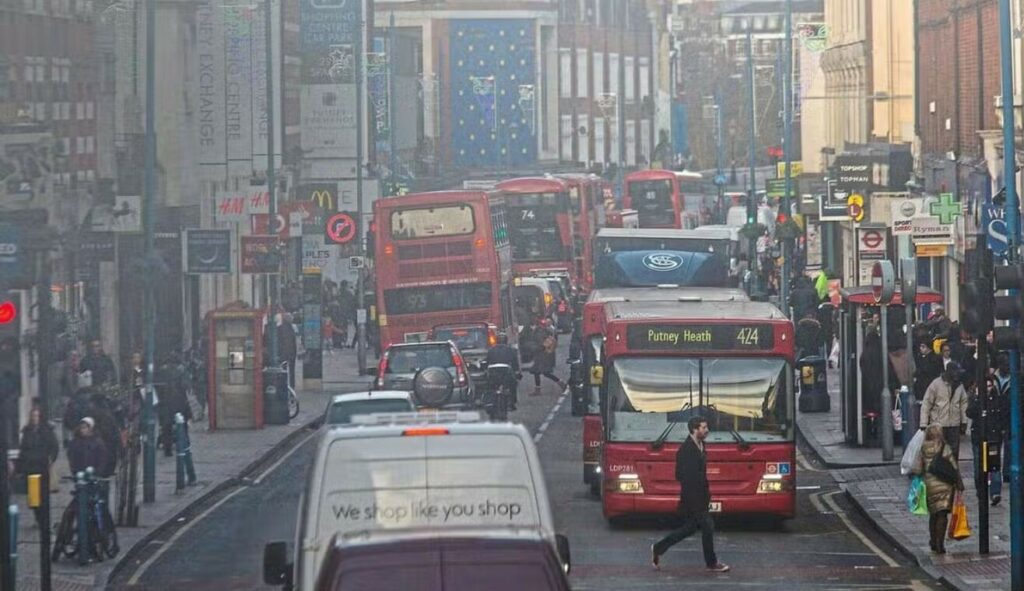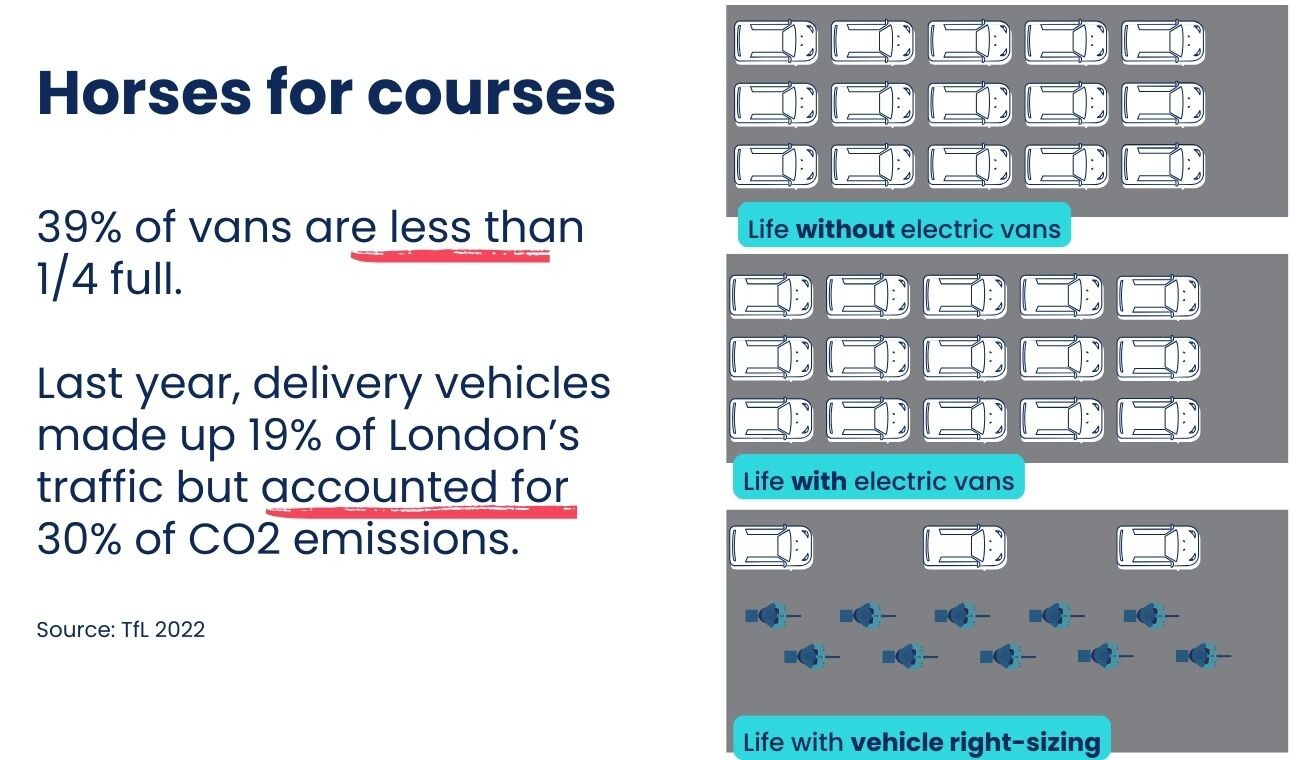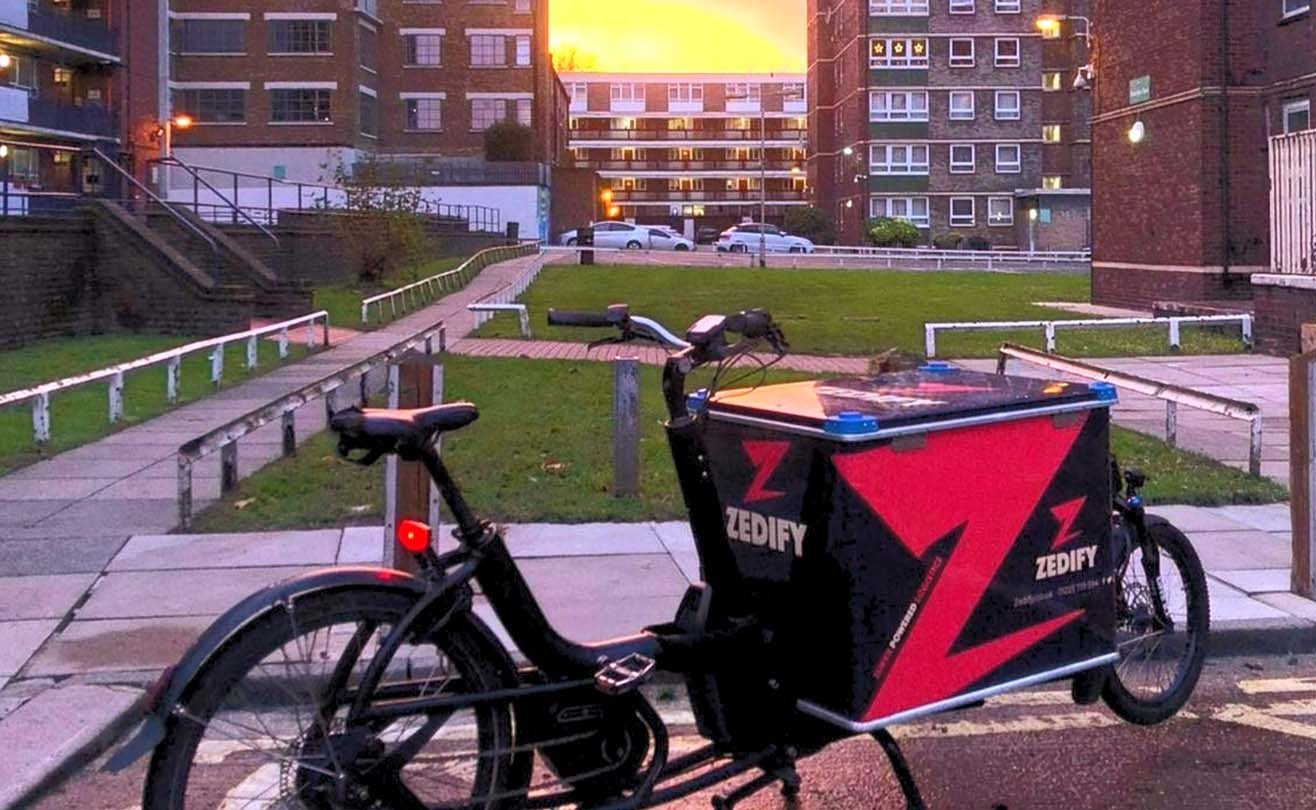
Thelastmile:isitablockertobusinessgrowth?
 February 2nd, 2024
February 2nd, 2024 Bex Young
Bex Young 12 minute read
12 minute readYour business’ growth is not an island
True growth is happening alongside a growing market and within a rapidly changing ecommerce system. To avoid a house of cards scenario, we need a last mile sector that’s built to absorb that growth and to rapidly decarbonise at the same time. In this article, learn about Zedify’s work with major brands to turn around their urban last mile deliveries with a cargo bike-first model.
It’s about celebrating what’s good in the industry first
As a tech enabled start up, you’d be forgiven for thinking we’d all about rubbishing the industry and saying how awful it is. But here’s the spoiler alert: carriers are doing some pretty amazing stuff.
Not so many years ago, you’d order something online and be pretty impressed if it arrived within a week. Today, the industry is transformed. You’d be mightily unimpressed if it didn’t arrive next day – complete with all the things that come broadly as standard… live tracking, 1 hour windows & notifications and all at an incredibly competitive price. 14 million parcels, (that’s almost 6 billion parcels), are delivered each day and 99.9+% of them arrive on time.
But – it’s a fact. We can do better. Actually, a lot better. And there are some massive challenges that are here at the moment, and these are getting bigger and bigger as this industry is growing so quickly.
Thenormrightnow
So here’s an image of a fairly typical UK street. What do we see?
First of all – there’s massive issues with congestion. Although we can’t blame this entirely on delivery vans, we do know that vans make up almost 20% of all traffic in cities. Congestion is costing the UK economy £8billion every single year. If you’re running a business; what does that actually mean to your customers? It means that, often, carriers miss the delivery windows because they’re stuck in traffic, and we know that this statistic is worse in cities.

We see a lot of issues with finding parking.
That contributes to congestion as vans often drive around, perhaps looking for a delivery bay or free spot but again, this is costing time and potentially a worse experience for end customers. The huge growth in online shopping means these pressures will be exacerbated as more deliveries leads to more vans, more traffic and more congestion.
The other thing we notice is air pollution. In London alone, pollution causes 10k deaths every year. So what does this mean? It means Councils are putting in place clean air zones and various schemes are now in place to try to reduce the impact on vans in cities.
All of this leads to a huge cost to carriers, and therefore to retailers, and ultimately to our end consumers. The last mile of a delivery in cities is responsible for up to 53% of overall delivery cost, and causes big headaches for carriers.
So with the huge expected growth of e-commerce, the message from local authorities is loud and clear. They are going to be making life pretty grim for carriers as they look to put in place measures that will make our cities, clean safe and just nice places to live.
There’s a load of good work going on to make some of these issues better; but is it enough?
The general push here is to ensure vans are remoded to electric. And whilst this can have a meaningful contribution to air pollution, unfortunately remoding to electric vehicles isn’t gonna fix it.
From a congestion point of view, an EV takes up the same amount of space. And those vans are typically still only a quarter full. And what about the biggest single challenge of our time? carbon emissions is a major issue for our industry. Transport is the largest emitter of CO2 emissions of any sector. And it’s the only sector which is struggling to go down.
From a carbon saving impact, An EV saves just 30% emissions on a diesel van. With all of the embodied emissions that go into it, clearly we’re not going to get to net zero by this action alone.

What do consumers care?
So we’ve discussed lots of issues for the city, and some of these can have major impacts on the end customer – such as missed delivery windows – but what else do they care about? Do the consumers at the checkout really care what vehicle their deliveries arrive in? We’ve always been hopeful that people feel a little bit guilty about the impact of all those deliveries coming to them, and here’s the interesting stat:
- “More than 80% of GenZ say they will pay more for sustainability.”
But do they actually choose the button that says ‘green delivery’ if it costs £0.50 more? What’s the answer? No! People won’t pay any more for a green service. So does that mean there is no incentive to push for greener deliveries? Do we wait until we’re forced by clean air zones or other top down pressures?Well, this is the other interesting stat…
- “Brands rating highly on their sustainability index grew brand value 31% more than the average top 100 brands.”
So, brands that are doing best are ones that have sustainability at their core – they understand the future and how we need to change. In summary, there’s no money to pay for green… but we absolutely have to do it, because that is what consumers expect. In summary, these are all massive challenges that our existing infrastructure will struggle to support.
We’ve had a good look at all the issues facing the industry, but with all upcoming growth, how can we make this a force for good with a triple bottom line – fantastic customer experience, a positive impact on our cities and all at a price that’s competitive. Is this fanciful?
Re-imagining the future
We’ve covered how the average urban street is really not working for people. We can all get behind this vision of a place to live that feels welcoming, where our kids can play on the streets and not feel threatened by big vehicles and this healthy, active way of getting our stuff delivered. So, how do we combine streets that people want to live and work in, with a model that allows for critical deliveries on time, at a price that’s affordable?
It’s very easy to get distracted with imagining the city of the future full of drones and bots doing your deliveries – we know this stuff is at least a generation away from being real. Let’s imagine what it can be today. There is a solution (or series of them – we’re not suggesting what we do is the panacea on its own) that is available now. It’s hard to think about, because it’s such a big infrastructure change from what we’ve done. It’s harder than keeping the same model and just re-moding to electric vehicles, but the benefits are genuinely incredible.
The Zedify model – how it works
Let’s just think about how deliveries happen at the moment. If you imagine a DPD or an Evri, they typically have a very large logistics hub miles outside the city. Vans and trucks arrive early in the morning to pick up parcels. The vans zoom down the motorway but when they hit the city, they grind to a halt, can’t find parking and nobody really wants them there – they take up loads of space, and are often noisy and polluting.
Our model utilises microhubs on the edge of an urban environment that acts as a gateway for deliveries coming into and out of the city. In this way, we can decouple that trunking bit (which vans andtrucks do really well) with the very specialist nature of the city. When parcels arrive at our microhubs, they are consolidated onto large electric cargo bikes and go off and do their rounds.
By being very close to the end users, we have very short stem time and the vehicles will typically do 2, 3 or even 4 rounds in a day. For our customers it means we can be much more flexible on time windows. From a footprint perspective, the vehicles are rarely empty, delivering and collecting through the round.
For more on how things work, take a look at our video, here.
We’ve built our own bikes
What we’ve found over the years is that cargo bikes are brilliantly set up to deal with the very specialist nature of a city, especially one that is becoming much more focused on creating liveable spaces – environments that are clean, safe and make it aspirational to live there.
Throughout our journey, we’ve had to deal with this being a very new industry, and the vehicles we’ve bought have often fallen short of our expectations around reliability and security. So, a couple of years ago, we embarked on a project to build our own vehicle based on over 15 years of experience. This is very much designed for the city – it’s perfect for tight, congested cities where the average speed of traffic is rarely over 10mph. Studies have shown these vehicles can be as much as 60% faster in the city.
It can make use of cut throughs and cycle infrastructure by passing traffic hold-ups. It’s low impact – little or no noise.
What we’ve learnt from working with major brands
We’ve already discussed that sustainability is never a number one choice for a consumer, especially in a cost of living crisis. We have to get the other bits right – no one cares whether you saved a few grams of carbon if your parcel ended up being an hour late or was left out in the rain and was destroyed. Retailers are always under pressure to deliver great customer service and do this at a competitive price but the new pressure is very much on impact. It’s what’s expected. It’s what gives brand loyalty and it tells customers that their retailer cares.
We also know that retailers can’t just get away with gimmicks. They can’t just do a small piece of marketing and get away with it. The change needs to be real and this needs to be backed up by facts with exact metrics on carbon impact.
- We spoke to one of our customers the other day, and asked them why they liked us and why they wanted to grow with us. The answer was simple – ‘you’re an extension of our brand’.
She went on to describe why this was so powerful – it meant their customer service team was tiny as they had so few complaints or issues. And it meant we did their sales job for them.
What else have we learnt?
Well if you read about our feedback, this very often mentions the cargobikes – it’s the memorable bit. It’s the cherry on the cake if all of the other needs are met – it’s got to be on time and undamaged with a great digital experience, but the handover of your parcel is often the only physical contact point on the whole journey.
If any of you have done it, doing deliveries is a stressful job however you do it. But when riding, this stress is often alleviated by the exercise and this really helps the doorstep experience – a smiling rider who’s arrived not caught in a traffic jam, on a cargobike that really tells the customer that you as a retailer care about the environment. This is really helping to build brand loyalty.
So this is what drives me [Rob] and all my team – the impact that we can do. Reducing carbon emissions is the biggest issue of our time and we’re just not going to get to net zero just by remoding to electric vans and keeping with the same model. We need to be bolder.
Over the last mile, a diesel van typically produces around 360g of CO2. But because of the huge amount of embodied emissions, an EV is just a 30% saving, whilst a super lightweight cargo bike saves over 90% on even an electric van.
So the message is – if we can put parcels onto these vehicles at a competitive price and with all of the expectations around service and cost, then we absolutely must.
This is really a call to arms.
We certainly can’t solve this problem on our own – we’re part of an amazingly adaptable and innovative logistics industry with loads of different solutions for different areas. We can work together on this. We’re really proud to be working with some of the major carriers and supporting them in their mission and acceleration to get to net zero.
We currently work with some great national retailers and of course we have to own the whole journey from distribution hub. Our expertise is in the last mile so if there are people that can support us with middle mile, cross-docking, warehousing etc then this is awesome.
We all have our own commercial interests but this is the biggest issue of our time that we have to solve. Let’s find ways of working together and solving this problem and make deliveries in cities better.




